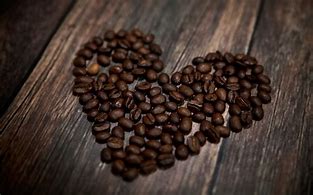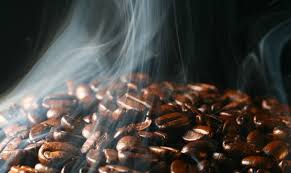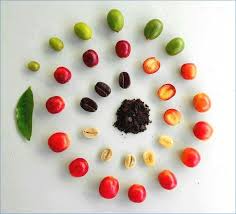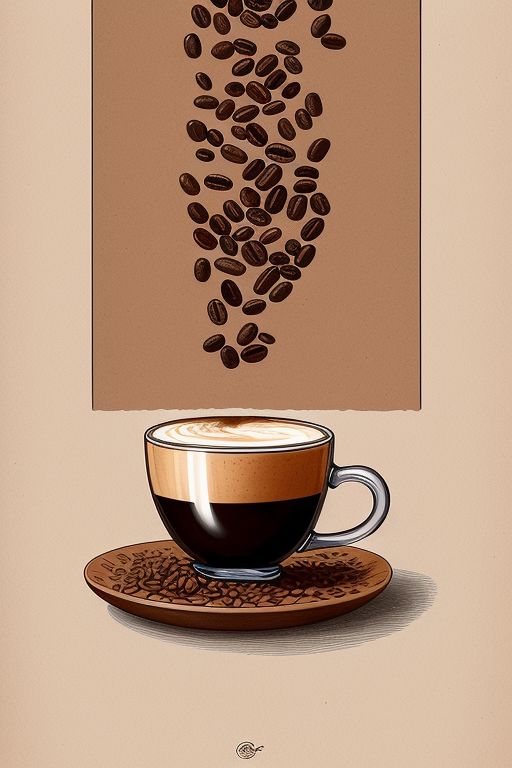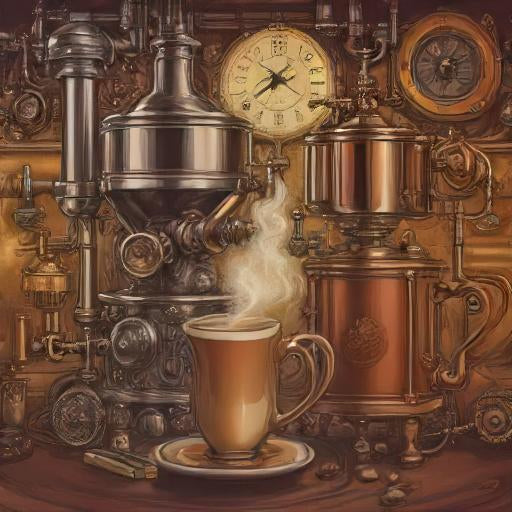
Brewing methods

-
Drip Coffee Maker: This method involves passing hot water through ground coffee contained in a filter. It's one of the most popular and convenient methods for brewing large quantities of coffee.
-
French Press: Coarsely ground coffee is steeped in hot water, and then a metal mesh filter is pressed down to separate the grounds from the liquid, resulting in a rich and full-bodied brew.
-
Espresso: This method involves forcing hot water through finely-ground coffee under high pressure, producing a concentrated and flavorful shot of coffee. Espresso forms the base for various espresso-based drinks like lattes, cappuccinos, and macchiatos.
-
Aeropress: Ground coffee is steeped in hot water and then pressed through a filter by air pressure, resulting in a clean and smooth cup of coffee with a shorter brew time compared to other methods.
-
Pour-Over: Hot water is poured over ground coffee in a filter cone or dripper, allowing the water to drip through and extract the flavors slowly. This method offers control over brewing variables like water temperature, flow rate, and agitation, resulting in a customizable and nuanced cup of coffee.
-
Cold Brew: Coarsely ground coffee is steeped in cold water for an extended period (usually 12-24 hours), resulting in a smooth, low-acid brew that is served cold or over ice.
-
Siphon: This method involves using a vacuum pot where water is heated in a lower chamber, creating vapor pressure that forces water into an upper chamber containing coffee grounds. After brewing, the vapor pressure decreases, causing the brewed coffee to be drawn back down through a filter into the lower chamber.
-
Moka Pot: Also known as a stovetop espresso maker, this method brews coffee by passing boiling water pressurized by steam through ground coffee, producing a strong and rich brew similar to espresso.
-
Turkish Coffee: Finely ground coffee is boiled with water and often sugar in a special pot called a cezve or ibrik. It's known for its strong flavor and thick, sludgy texture due to the fine grounds being left in the cup.
- Percolator: Water is heated in the bottom chamber of the percolator, and the water is then forced up a tube and over a perforated basket containing coffee grounds. The water then seeps through the grounds, cycling repeatedly until the desired strength is reached.
-
Chemex: The Chemex is a pour-over brewing device shaped like an hourglass. It uses a thick paper filter and a specific pouring technique to produce a clean and flavorful cup of coffee. The design of the Chemex also makes it an elegant serving vessel.
-
Vietnamese Coffee: This method involves brewing coffee with a small metal drip filter called a phin. Coarsely ground coffee is placed in the filter, hot water is added, and the coffee drips slowly into a cup containing sweetened condensed milk.
-
Turkish Coffee: Finely ground coffee beans are simmered in water with sugar (optional) in a special pot called a cezve or ibrik. It's traditionally brewed on a stovetop or over a flame, and the resulting coffee is strong and often served unfiltered.
-
Cowboy Coffee: This method is a simple and rustic way to brew coffee over a campfire or stove. Coarsely ground coffee is added directly to hot water in a pot or kettle, boiled, and then left to steep briefly before serving.
- Iced Coffee: Various methods can be used to make iced coffee, such as brewing coffee normally and then cooling it down with ice or cold water, or brewing it directly over ice using methods like pour-over or AeroPress. Cold brew coffee is also a popular choice for making iced coffee due to its smooth and less acidic nature.
- Single Serve Pod Systems: These systems use pre-packaged pods or capsules containing coffee grounds. Machines like Keurig or Nespresso brew coffee by puncturing the pod and passing hot water through it. While convenient, some people find these methods produce less flavorful coffee compared to other brewing methods.
- Japanese Iced Coffee: This method involves brewing hot coffee directly onto ice, which rapidly cools the coffee and locks in the flavors. It results in a bright and aromatic iced coffee with more complexity than traditional cold brew.
- Steeped Coffee Bags: Similar to tea bags, these are individual coffee bags filled with ground coffee. You simply steep them in hot water for a few minutes, like you would with tea, and then remove the bag. It's a convenient option for single servings or when you're on the go.
- Sowden SoftBrew: This is a coffee maker that uses a fine stainless steel mesh filter to steep coffee grounds in hot water. It's designed to produce a clean cup of coffee with a full-bodied flavor, similar to French press but with a different filter mechanism.
- Nitro Cold Brew: Cold brew coffee infused with nitrogen gas, typically served on tap like a beer. The nitrogen gives the coffee a creamy texture and a frothy head, similar to a stout beer. It's becoming increasingly popular in specialty coffee shops.
- Japanese Syphon (Vacuum Pot): This brewing method uses a glass or metal contraption consisting of two chambers, one for water and one for coffee grounds. As the water heats up, it creates vapor pressure that forces it into the upper chamber where the coffee grounds are. Once the heat is removed, the brewed coffee is pulled back down through a filter into the lower chamber.
- Sock Pot (Café de Chaussettes): This method is traditional in some parts of Southeast Asia and Africa. It involves using a cloth filter, often resembling a sock, suspended over a pot or cup. Coarsely ground coffee is placed in the sock, and hot water is poured over it, resulting in a strong and flavorful brew.
- Pressure Brewing with the ROK Espresso Maker: The ROK Espresso Maker is a manual espresso machine that uses a combination of pressure and manual force to brew espresso. It doesn't require electricity and relies on the user to generate the pressure needed to extract espresso from finely-ground coffee.

